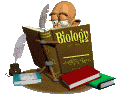
DNA & Proteins

Chapter Objectives
At the end of this unit students
will be able to
1. Describe the contributions of Griffith; Avery, McCarty and McLeod;
Hershey and Chase; Chargaff, Pauling, and Franklin, Wilkins, Watson,
and Crick to the development of the DNA model.
2. Describe the structure of DNA and RNA molecules and their component
nucleotides..
3. Relate the role of base-pairing rules to the structure of DNA.
4. Summarize the process of DNA replication and repair.
5. Compare the structure of DNA and RNA.
6. Summarize the processes of transcription and translation.
7. Determine the sequence of amino acids in a protein using DNA or RNA
sequences and an RNA genetic code chart.
8. Describe how eukaryotic and prokaryotic genes are organized and regulated.
9. Describe five types of mutations and how they may alter genetic material.
10. Describe recent advances in gene technology and genetic engineering.
Chapter Terms
| Identifying the Genetic Material | Structure of DNA |
| vaccine virulent transformation bacteriophage |
double helix nucleotide deoxyribose base-pairing rules complementary base pair |
| Replication of DNA | From Genes to Proteins |
| adenine guanine cytosine thymine |
ribonucleic acid |
| Gene Regulation and Structure | Genetic Engineering |
| intron exon point mutation deletion insertion translocation |
gene cloning Human Genome Project DNA fingerprinting |
Animated
Graphics Courtesy of

Jo's World